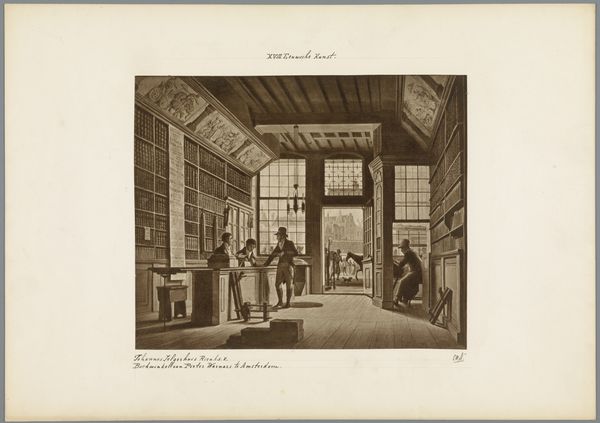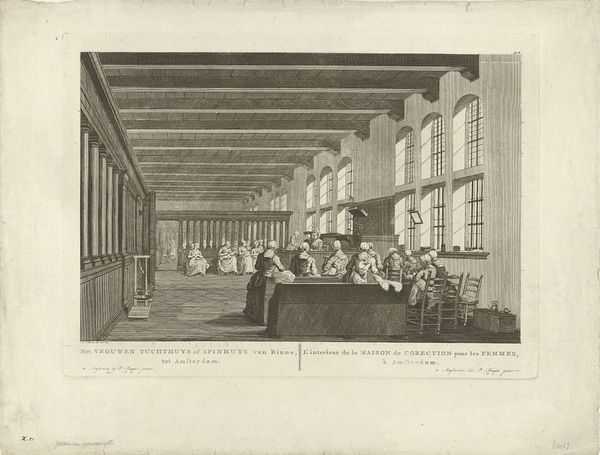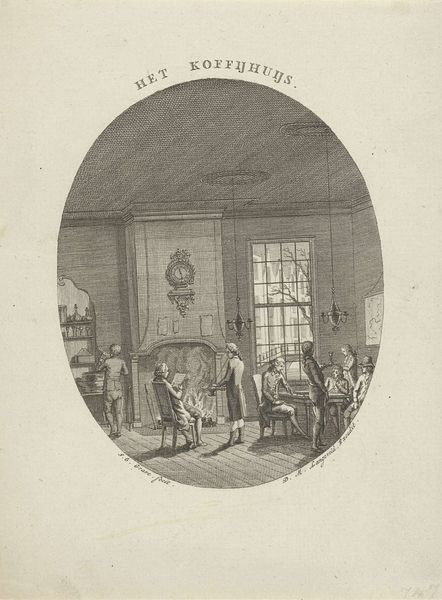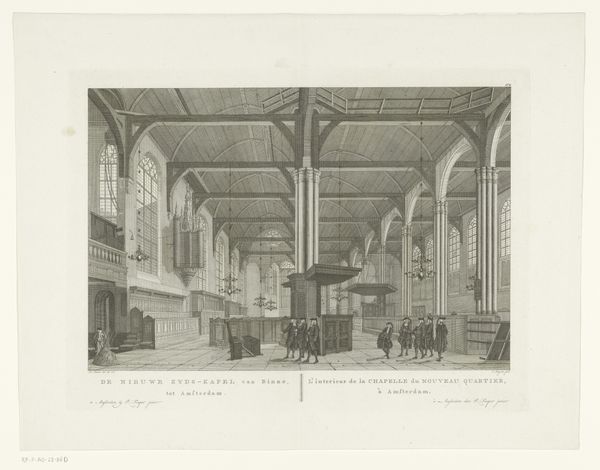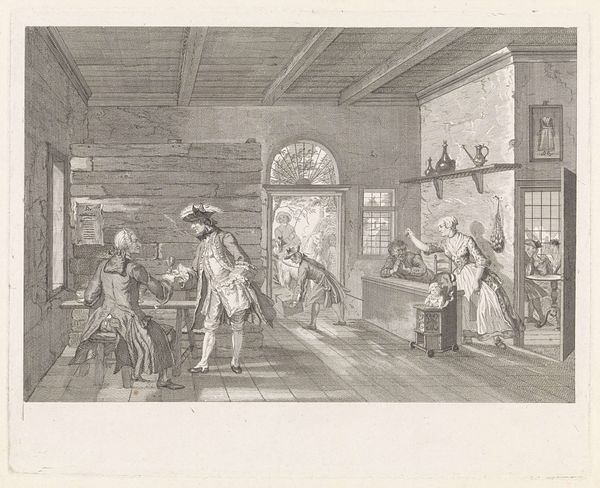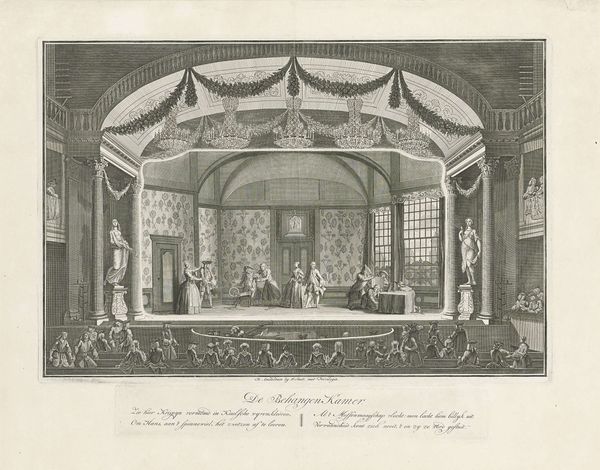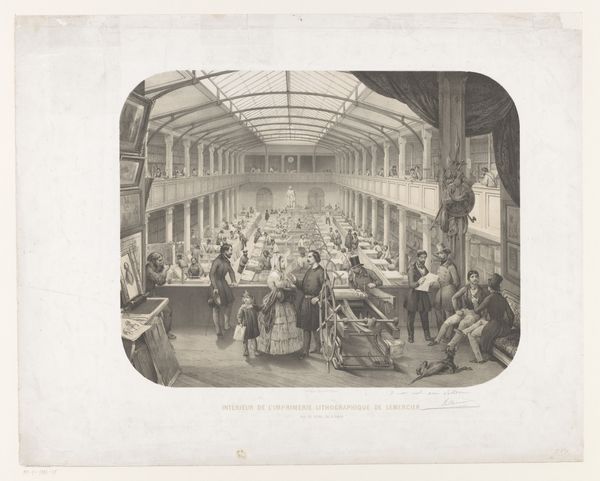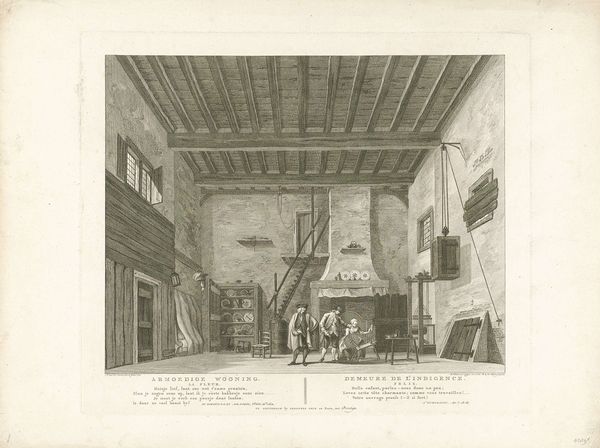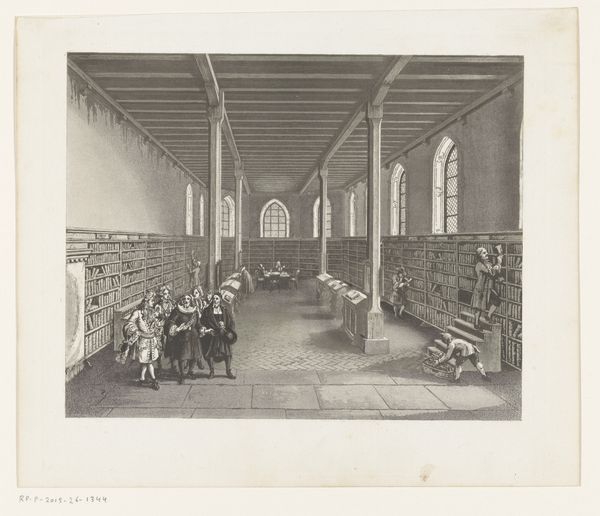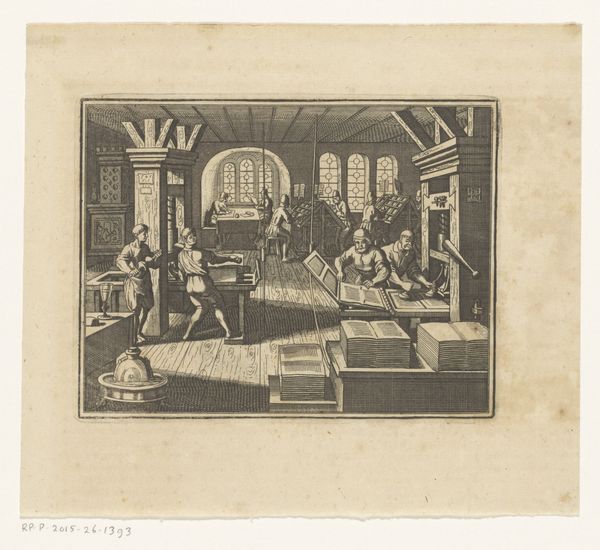
Dimensions: height 222 mm, width 362 mm
Copyright: Rijks Museum: Open Domain
Curator: The somberness is striking, isn't it? Even in monochrome, one senses a solemn hush. Editor: Indeed. What we have here is "Interior of the Armenian Church in Amsterdam," an engraving by Caspar Jacobsz. Philips, dating back to 1783. It's a rather detailed depiction of a religious service. Curator: The architecture itself commands attention. Note the stark geometry of the windows, juxtaposed against the ornate altar. Philips masterfully utilizes line and shadow to define the space. There's a certain rigidity, perhaps a commentary on the dogma itself? Editor: The altar does feel important, and I feel Philips uses it to talk to tradition itself. That alter is clearly the religious and visual focal point of this space and possibly the key to the narrative: Observe the arrangement of the figures - the kneeling congregants, the priests at the altar, and the standing observers near the window all have the altar at the focus of their posture. The windows, however, frame empty wallspace, maybe Philips comments on religion vs cultural works of memory? Curator: Interesting. The positioning of those figures, though, adds to the formal structure. Notice how the composition moves in a careful sequence from dark to light. This is definitely no arbitrary placement. Every line feels deliberate, calculated. Editor: While form shapes perception, I keep getting drawn back to the symbols inherent in a space like this - a sacred place providing sanctuary, the bowed heads speaking of faith and obedience, or of introspection. Those meanings ripple outward and speak across time. Curator: But consider how those "symbols", as you say, gain meaning precisely through the formal arrangements. Light, line, shape, and volume converge to construct meaning. Even the viewer's emotional reaction, such as that solemn hush you described initially, comes from experiencing formal tensions. Editor: Perhaps, yet I remain convinced of the power symbols retain. A church interior speaks of communal hope regardless of technique or era. The continuity across cultural interpretations persists. Curator: An excellent point to consider – the interplay between form and cultural memory remains a potent point for exploration with every viewing. Editor: Absolutely; and perhaps our different viewpoints offer different doors into seeing this church's interior with renewed focus.
Comments
No comments
Be the first to comment and join the conversation on the ultimate creative platform.
